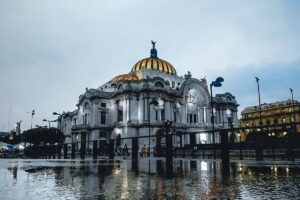Hello educational travelers!
Today’s post is not about a museum but instead a wonderful destination spotlight on Monticello written by one of your featured writers, Jeff Stabins.
I hope you enjoy what he has to share with you!
President John F. Kennedy once remarked to a room full of Nobel laureates that it was the greatest gathering of intellect in the history of the White House “…since Thomas Jefferson dined alone.” Our third president was indeed a brilliant scholar, scientist, and writer— a Renaissance man whose words, ideas and actions helped forge our nation. Educators and student travelers interested in exploring the life and times of Thomas Jefferson owe it to themselves while visiting Washington D.C. to take a side trip to Monticello near Charlottesville, Virginia.
Monticello means little mountain in Italian and sits at the summit of an 850-foot peak in the Piedmont region of Virginia. Monticello was the primary plantation and home of Jefferson who started its construction when he was just 26 years old. The house, itself, is an architectural wonder, designed by Jefferson after studying books of neoclassical principles popular at the time of the founding of our Republic. Its most dramatic design is that of an octagonal dome, located above the west front of the building in place of a second story portico.
Monticello has approximately 11,000 square feet of living space, much of which is dedicated to pursuits of the mind including his third library collection. The first one burned and he ceded his second to Congress after the British burned the Capitol in 1814. The entrance hall into Monticello contains recreations of items collected by Lewis and Clark whose expedition was commissioned by President Jefferson to explore the Louisiana Purchase he negotiated from Napoleon.
Like every plantation of its time Monticello employed hundreds of slaves who lived on Mulberry Row, three hundred feet south of the great home. One cabin was, for a time, the home of Sarah “Sally” Hemings, a household slave with whom Jefferson fathered six children. The slaves maintained an extensive vegetable garden where Jefferson experimented with different species.
Students and teachers on an educational tour to Washington D.C. should consider including a visit to Monticello. Not only will they be mesmerized by the home, but also the botanical laboratory of both ornamental and edible plants grown on the property from around the world.
Until next time,
Jeff.



